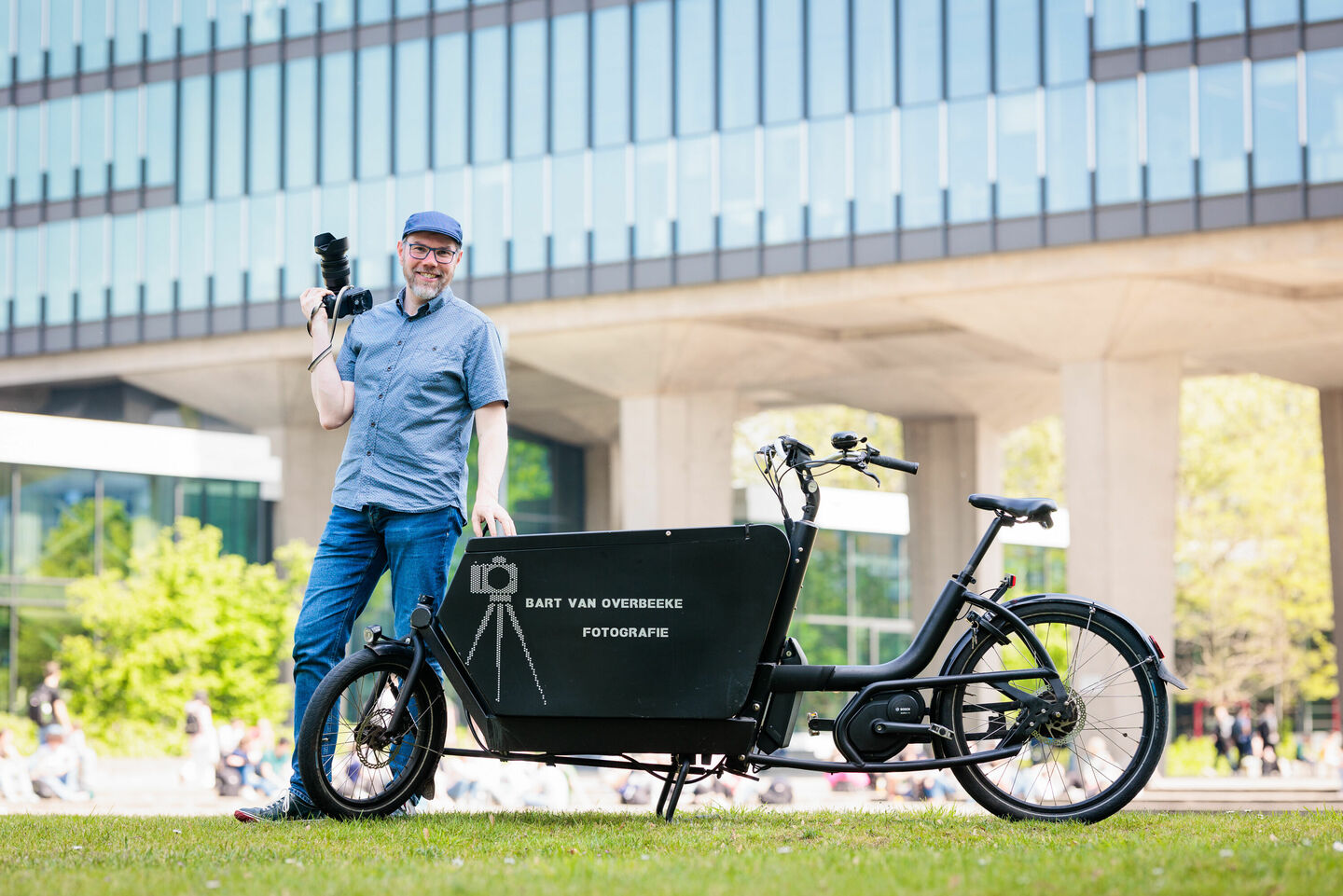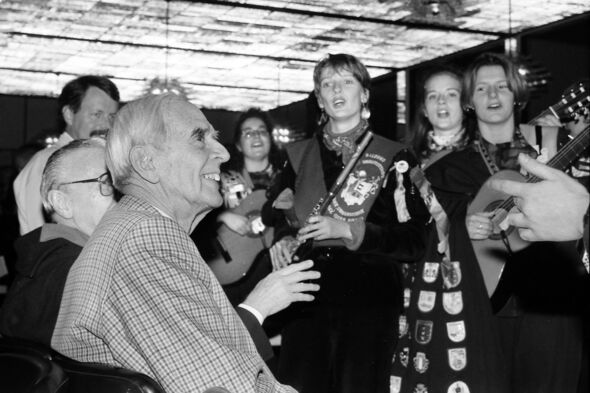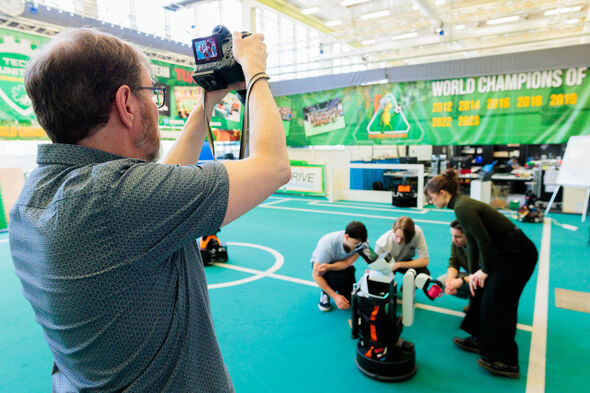
Behind the Scenes | Bart van Overbeeke, Brainport photographer
From his first photo for Cursor to now
Keeping a university running is no easy feat. It takes a lot of hands to make sure everything is in order, from administration to cleaning and from security to technical maintenance. Who are the unsung heroes behind the scenes keeping everything on track? In this series, Cursor shines the spotlight on TU/e employees. Today: Bart van Overbeeke, Brainport photographer
In 1993, he got his first professional photo assignment from Cursor. Overbeeke was commissioned to photograph none other than Frits Philips. He quickly progressed from Cursor photographer to campus photographer, and then to Brainport photographer. His three focus areas are: high-tech, education and science. “I like anything that falls into those areas, whether it’s an event, student team, cleanroom or chip.”
What time do you clock in?
“At around 11 AM. I generally don’t accept assignments before then. I do start checking my email at about 9 AM. It’s a flexible job, so I sometimes get requests for later that same day. Those first two hours I use to respond to all of the requests, as well as reply to people that need a photo from my archives, for instance.”
What led you to this job?
As a student, I was a member of the photography association here, Dekate Mousa. I quickly developed my skills as a photographer and also joined the association’s board. When I decided to quit my studies after two years, it seemed like an obvious choice to go into photography. I went up to Han (the editor-in-chief of Cursor at the time, ed.) and asked him: ‘If I go professional, will you have more work for me?’ He said yes and that’s how I became Cursor’s go-to photographer.
Soon, I was getting work from different clients. Associations, events on campus, or even the university board – and from TU/e it snowballed into the Brainport as a whole. Nowadays, I spend about half my time working at TU/e and the other half mainly in high-tech, for companies such as ASML.”
What is the best part of your job?
“The variety. Sometimes I’m a fly on the wall at an event, sometimes I’m doing a portrait – I always have a little conversation with the subject first – and sometimes I’m spending two hours in a laboratory trying to grind out the perfect photo for a PhD project.”
And the least enjoyable part?
“Processing images on the computer. First I look closely at all the options. What’s the right facial expression? Are the eyes nice and sharp, and opened properly? And then I have to find the right light-dark setting and color balance.
I’m a perfectionist, so I end up spending too much time on the PC and that’s what I don’t like. But that’s actually the only thing I really don’t like. For the rest, I like everything. As long as I’m taking pictures, I’m happy.”
What’s the craziest thing you experienced in your work?
“In 1997, word got out that the new Mercedes-A wasn’t passing the Moose Accident Test. That was a huge embarrassment to Mercedes, so they were of course trying to address the issue. And before long, the rumor started up that it was being researched here at TU/e.
Cursor didn’t waste any time asking me to try and verify the rumor by looking for the car on campus. So I went to the automotive lab, looked through the window, and saw the outline of a Mercedes-A under a tarp. The tires were peeking out from underneath, just revealing the Mercedes star.
I didn’t see anyone, so I quickly went inside with my camera at the ready. I got two shots off before hearing someone banging on the windows. So I turned around and there was a staff member yelling and gesturing for me to get out.
The rumor turned out to be true and my photos made it into the article, but it never sat right with me. I prefer to take pictures at my leisure, preferably of good news.”
What are you most proud of?
“That would have to be the student teams. I regularly take pictures for all kinds of teams and sometimes even join them on trips. In 2013, for example, I traveled to the World Solar Challenge in Australia with Solar Team Eindhoven’s solar car. They had built the world’s first family solar car. This sparked a huge amount of worldwide media attention, which meant my photos were also shared all over the world. That was very special and really gave me a boost.
I like to intersperse my ‘normal’ assignments with these kinds of unpaid or low-paid assignments for student teams. It’s how I give back to society and I get a lot of energy out of it myself.”
What time do you clock out?
“I don’t really. I check my email before I go to bed and again when I get up. It’s a real problem; the only time I’m not on is when I’m sleeping.”
What do you do off the clock?
“Every week I assist my wife in her company. She trades, restores and researchers very specific Japanese antiques.
Sometimes I tune into an auction when she doesn’t have time, sometimes I go get pieces when they’re too big to ship, sometimes I help her find information on a particular piece, sometimes I take pictures of her pieces, sometimes I assist in restorations. Going back and forth, packaging, making custom boxes and crates – whatever’s needed.
Photography was my hobby and it became my job. Then antiques became my hobby and now antique has also kind of turned into my job.”




Discussion